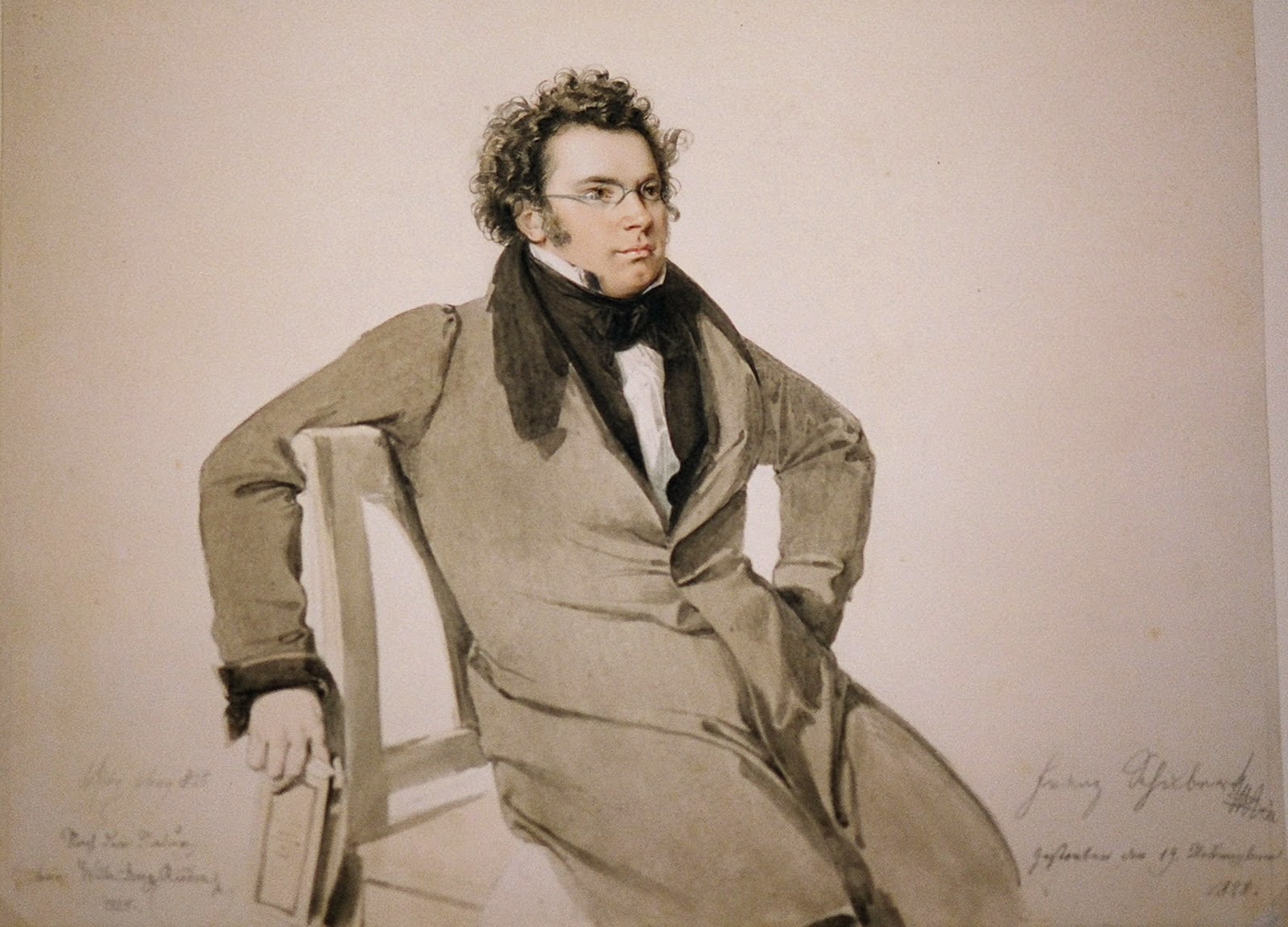Spring Symphonies: 54/60 - Schubert: Symphony No 8 "Unfinished"
There is something quite misleading about the title of this symphony. If it were called the "incomplete", "the neglected" or the "put to one side" symphony I don't think it would have gained half the mystique it has. As it is poor Schubert is judged to have reached the end of his term with this work unfinished though some great tragic twist of fate when he probably just ran out of ideas or got a better one to work on.
It's a marvellous piece that I think everyone should know just for the pleasure of it's pages. But it is an interesting piece as well as a beautiful - it seems to be enriched by two opposing forces. This symphony spans two musical styles - allowing for a wide range of approaches. It sits, like some of Schubert’s work in a hinterland between overt structural normalcy - the Classical way and the overt emotional context - the Romantic way. These movements were probably started in 1822 and we don’t know way they weren’t finished. They don’t tell a story and yet they seem self-sufficient as it stands, but that might just a trick our mind plays on us because we’re told they are parts of a great piece of music and I suspect as such we think they must be revered. There’s more here that’s Romantic in outlook than probably the rest of his symphonic output.
Diverse conductors pull it off in different ways: Minkowski is elegant and poised but straightforward (and vibrato free), Handley is spritely and bright, Furtwangler is mysterious and haunting, Karajan is singing and sad - I could go on, not least because there are hundreds of recordings of these two movements. Whatever the music has a portentous quality which fits the saddest story that you can amass around it if the conductor so wishes.
But it would be folly to suppose that this is autobiographical music - there’s little else in Schubert’s orchestral writing which suggests that. He was to live a further six years and one finished and another unfinished symphony lay ahead. So this is not a work of remorse by Schubert himself and if it were then most likely we would not have got a fragment of Scherzo too.
It is a most wonderful work whatever it’s genesis and history and it speaks to us at a very intimate and a very grand scale simultaneously. The opening movement is marked Andante moderato and is propelled (sometimes jet propelled) by pulsating basses. It’s a standard sonata form with one or two interesting twists for the scholar. The haunting sections of the music in the right hands - Furtwangler’s in particular - can sound desperately tense and fraught with anxiety. The same music quickly develops into a defiant mood - noble and stoic. It has many faces - and most of them extremely beautifully outlined. It never falters as it moves from one of these moods to another and therein lies some of Schubert’s genius - he knew how to fashion these great points of transition.
The slow movement is a more simple form - described by one source as a Sonatina. The mood contrast as one would expect but the mood is mutable somewhat resigned and valedictory in some cases to something with a much greater sense of loss and at times anguish. It hold sth attention again through the most beautiful utterance. The strings plodding gait against a wailing wioqdband probably the hardest to fit into the “beautiful symphony” model. Some of its lines are so pure, simple yet affecting that they take one’s breath away. There is nothing showy here - just a mix of very humane episodes of varying complexity but all equally intimate and accessible.
There’s perhaps one good reason why this symphony wasn’t finished and that was because it, like Bruckner’s Ninth had reached a point where bettering what had already been written was beyond the composer. If that’s the case then I think we might regard these symphonies both as dead ends. but we don’t because we can treasure what we have of them and take them into our hearts. In both cases the emotional content of what’s there is more than sufficient to make up for our yearning for a four movement work.
But it is perhaps an interesting thought experiment to consider what we would do if the scherzo and finale of the Unfinished symphony were found? Would we want or be abel to take these movements to out hearts. And to take it further, what if they were found but also found to be lacking in quality - than I suspect we’d stick with the two movement work.
Such experiments can remain as mind games - Schubert scholarship might find something, but somehow I think even Schubert realised nothing everyday was going to work following these towering pinnacles of his orchestral art.
Schubert created a symphony for all times and all people then, or rather he created half of one. It can be marked as one of the most popular classical works and it’s themes are in constant use in popular culture. The “work” as we known it, had it’s premiere in 1865 albeit with Schubertian additions to make up the symphonic normal four movements. It has endured and will continue to delight audiences and intrigue musicians.



Comments